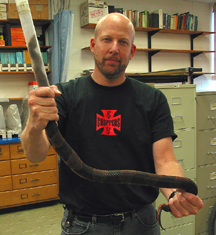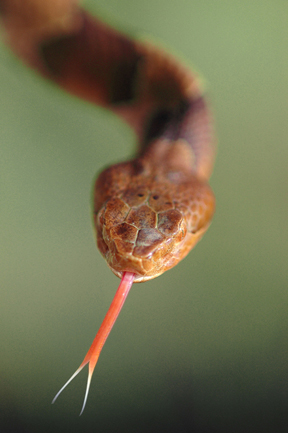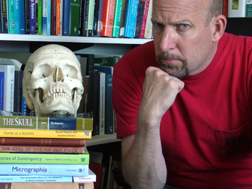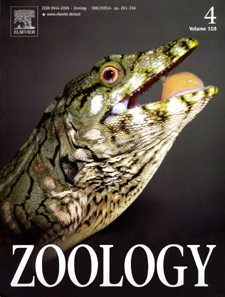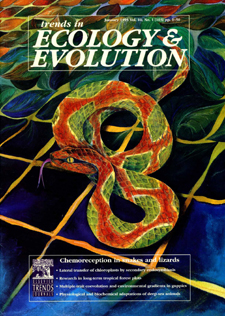Kurt Schwenk
Professor
Contents
Contact Information
Office: BioPharmacy 600
Voice: (860) 486-0351
Fax: (860) 486-6364
E-mail: kurt.schwenk@uconn.edu
Mailing address:
Department of Ecology and Evolutionary Biology
University of Connecticut
75 N. Eagleville Road, U-3043
Storrs, CT 06269-3043
Related Links:
My CV
Schwenk Lab Page (under construction)
My Evolutionary Classics page
PhD student Tobias Landberg's page
Former PhD student Dr. Chuck Smith's page
My brother John Schwenk's page
Major Research Interests
- Phenotypic evolution
- Evolutionary constraint
- Evolutionary and functional morphology of vertebrates
- Evolutionary and functional morphology of feeding in tetrapod vertebrates, especially squamate reptiles (lizards and snakes)
- Evolutionary and functional morphology of chemoreception in squamate reptiles (lizards and snakes)
- Evolutionary and functional morphology of the vertebrate tongue
My research program is three-pronged: I pursue empirical studies related to the functional and evolutionary morphology of squamate feeding and chemoreception, and theoretical work related to phenotypic evolution and evolutionary constraint. Feeding and chemoreception are functionally and evolutionarily related in squamates owing to their shared use of a single, complex organ, the tongue. From a biomechanical point of view, optimization of the tongue for feeding function makes it less effective in (vomeronasal) chemoreception and vice versa. Thus, there is a classic functional (and evolutioinary) trade-off between the two principal functions of the tongue. Phylogenetic character analysis reveals how each major clade of squamates has found a unique 'solution' to the problem of this trade-off. The dynamic nature of the evolutionary tension created by competing sources of selection pressure has led to my theoretical work on internal selection, functional integration, phenotypic stability and evolutionary constraint. Much of this work has been done in collaboration with Günter Wagner at Yale University. Although theoretical, the work is firmly grounded in my empirical work on squamate feeding and chemosensory systems, which have proven to be compelling model systems for approaching these broader issues.
Information for Prospective Graduate Students
Students in my laboratory develop their own, independent research programs under my supervision. Although I expect there to be some overlap or mutual interest in student projects, I do not require students to work in my specific research areas. Ideally students will incorporate elements of morphology, evolution and/or function into their projects. Purely ecological or conservation-related projects are discouraged (because they lie outside my areas of expertise), although these can be elements of a research program centered on the former topics. Although I am best able to supervise work on squamate reptiles, I am open to projects dealing with any vertebrate group. I principally do laboratory-based work, but recent graduate students have included significant field components in their research. Applications from potential doctoral students are preferred, but doing a Masters is also possible.
The Department of Ecology and Evolutionary Biology at UConn is very integrative and interactive, and there is a great deal of cross-fertilization among labs. The deparment comprises 30 full-time faculty, all of whom work in the general area of organismal biology. There are an additional 55+ biologists in our sister departments of Physiology and Neurobiology, and Molecular and Cell Biology - and this is not to mention a variety of wildlife biologists in the School of Agriculture, biomedical researchers in the School of Medicine, etc. Thus, there is virtually no area of expertise unavailable to students when they assemble their research advisory committees.
There are seven vertebrate biology faculty in the department (4 herpetology, 2 ornithology, 1 ichthyology), and along with graduate and undergraduate students, constitute a very active and interactive research group. We have informal weekly meetings called 'vertlunch' in which we read and critique recent papers (and laugh a lot) and every Friday at 4:00 the Schwenk and Rubega labs meet for 'beermorph' in which - well, it's pretty self-explanatory. Sometimes we even talk about vertebrate morphology.
Before applying directly to the department for admission into the graduate program, you should contact me by email and describe your research interests and goals so that we can determine if there is an appropriate match. You should also explore the departmental web page to get as much information about EEB as you can. If you have any questions at all about the department or the University, don't hesitate to email me. I can also put you in touch with current graduate students if you would like to hear about the program from their perspective.
Students accepted into the doctoral program are guaranteed 5 years of support (mostly by means of Teaching Assistantships). Support beyond 5 years is usually possible for students making good progress, but is not guaranteed. Masters students are guaranteed 2 years of support. The support package includes a tuition waiver and full health benefits.
Lab Publications—Many Available As PDFs
Email for reprints not available here as pdfs: kurt.schwenk@uconn.edu
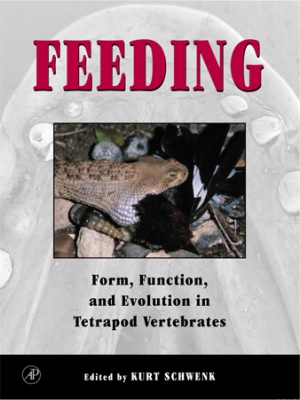
BOOKS:
Schwenk, K. (editor) (2000) Feeding: Form, Function and Evolution in Tetrapod Vertebrates. Academic Press, San Diego. xv + 537 pp.
Schwenk, K. and G. P. Wagner. Evolutionary Constraint. Princeton Univ. Press. (in preparation)
EDITED COMPILATION:
Schwenk, K., and J. M. Starck (eds.) (2005) Integrative organismal biology: papers in honor of Professor Marvalee H. Wake. Zoology 108(4):261-356. LINK
PAPERS:
(names in bold are current or former graduate students)
Smith C. F., G. W. Schuett, R. L. Earley, and K. Schwenk. The spatial and reproductive ecology of copperheads, Agkistrodon contortrix (Serpentes: Viperidae), at the northeastern extreme of their range. (submitted)
Filoramo, N., and K. Schwenk. The mechanism of chemical delivery to the vomeronasal organs in squamate reptiles. (submitted)
Sherbrooke, W. C.,* and K. Schwenk.* (2008) Horned lizards (Phrynosoma) incapacitate dangerous ant prey with mucus. Journal of Experimental Zoology A. In press. (*authorship equally shared) PREPRINT
Smith, C. F., K. Schwenk, R. L. Earley and G. W. Schuett (2008) Sexual size dimorphism of the tongue in a North American pitviper. Journal of Zoology 274:367-374. PDF
Schwenk, K. (2008) Comparative anatomy and physiology of chemical senses in non-avian aquatic reptiles. In: Sensory Evolution on the Threshold. Adaptations in Secondarily Aquatic Vertebrates. J. G. M. Thewissen and S. Nummela (eds.). Univ. of California Press, Berkeley. Pp. 65-81. PDF
Schwenk, K., and J. G. M. Thewissen (2008) Aquatic and semi-aquatic reptiles. In: Sensory Evolution on the Threshold. Adaptations in Secondarily Aquatic Vertebrates. J. G. M. Thewissen and S. Nummela (eds.). Univ. of California Press, Berkeley. Pp. 7-23. PDF
Eisthen, H., and Schwenk, K. (2008) The chemical stimulus and its detection. In: Sensory Evolution on the Threshold. Adaptations in Secondarily Aquatic Vertebrates. J. G. M. Thewissen and S. Nummela (eds.). Univ. of California Press, Berkeley. Pp. 35-41. PDF
Azizi, E., T. Landberg and R. J. Wassersug (2007) Vertebral function during tadpole locomotion. Zoology 110:290-297. PDF
Schwenk, K. (2006) Evolution illustrated (Letter to the Editor). The Hartford Courant, 4 March:A9. PDF
Schwenk, K.,and M. Rubega (2005) Diversity of vertebrate feeding systems. Pp. 1-41. In: Physiological and Ecological Adaptations to Feeding in Vertebrates. J. M. Starck and T. Wang (eds.). Science Publishers, Enfield, NH. PDF
Schulp, A. S., E. W. A. Mulder and K. Schwenk (2005) Did mosasaurs have forked tongues? Netherlands J. of Geosciences 84:359-371. PDF
Schwenk, K. , W. Korff and J. M. Starck (2005) Preface. Integrative Organismal Biology: Papers in Honor of Professor Marvalee H. Wake. Zoology 108:261-267. PDF
Schwenk, K., and G. P. Wagner (2004) The relativism of constraints on phenotypic evolution. Pp. 390-408. In: Phenotypic Integration: Studying the Ecology and Evolution of Complex Phenotypes. M. Pigliucci & K. Preston (eds.). Oxford Univ. Press, Oxford. PDF
Schwenk, K. (2004) Leapin’ non-ophidian squamates! REVIEW OF: Lizards. Windows to the Evolution of Diversity, by E. R. Pianka and L. J. Vitt. Trends in Ecology and Evolution 19:357-358. PDF
Landberg, T., J. Mailhot and E.L. Brainerd (2003) Lung ventilation during treadmill locomotion in a terrestrial turtle, Terrapene carolina. Journal of Experimental Biology 206(19): 3391-3404.
Vitt, L. J., E. R. Pianka, W. E. Cooper and K. Schwenk (2003) History and the global ecology of squamate reptiles. American Naturalist 162:44-60. PDF
Schwenk, K., and G. P. Wagner. (2003) Constraint. Pp. 52-61. In: Key Words and Concepts in Evolutionary Developmental Biology. B. K. Hall & W. M. Olson (eds.). Harvard University Press, Cambridge. URL
Schwenk, K. (2002) Constraint. Pp. 196-199. In: Encyclopedia of Evolution, M. Pagel (ed.). Oxford Univ. Press, Oxford.
Azizi, E., and T. Landberg (2002) Effects of metamorphosis on the aquatic escape response of the two-lined salamander (Eurycea bislineata). Journal of Experimental Biology 205(6): 841-849.
Schwenk, K. (2002) Aristotle’s ghost. Creative Nonfiction No.19:32-40 (Special Issue: “Diversity Dialogues”). PDF
Schwenk, K. (2001) Extrinsic vs. intrinsic lingual muscles: a false dichotomy? Bull. Mus. Comp. Zool. (Harvard) 156:219-235.
Schwenk, K., and G. P. Wagner (2001) Function and the evolution of phenotypic stability: connecting pattern to process. American Zoologist 41:552-563. PDF
Schwenk, K. (2001) Functional units and their evolution. Pp. 165-198. In: The Character Concept in Evolutionary Biology. G. P. Wagner (ed.). Academic Press, San Diego.
Nishikawa, K. C., and K. Schwenk (2001) Ingestion in amphibians and reptiles. In: Encyclopedia of Life Sciences. John Wiley & Sons, Ltd: Chichester [1] [doi:10.1038/npg.els.0001835] (pdf = 7 pp) PDF
Schwenk, K. (2000) The apian way: from beehives to burrows, animal building sheds new light on biology. REVIEW OF: The Extended Organism. The Physiology of Animal-Built Structures, by J. Scott Turner. The New York Times Book Review, 10 Dec., p. 37. PDF or URL
Schwenk, K. (2000) Preface. Pp. xiii-xv. In: Feeding: Form, Function and Evolution in Tetrapod Vertebrates. K. Schwenk (ed.). Academic Press, San Diego.
Schwenk, K. (2000) Tetrapod feeding in the context of vertebrate morphology. Pp. 3-20. In: Feeding: Form, Function and Evolution in Tetrapod Vertebrates. K. Schwenk (ed.). Academic Press, San Diego.
Schwenk, K. (2000) An introduction to tetrapod feeding. Pp. 21-61. In: Feeding: Form, Function and Evolution in Tetrapod Vertebrates. K. Schwenk (ed.). Academic Press, San Diego.
Schwenk, K. (2000) Feeding in lepidosaurs. Pp. 175-291. In: Feeding: Form, Function and Evolution in Tetrapod Vertebrates. K. Schwenk (ed.). Academic Press, San Diego.
Schwenk, K. (2000) A bibliography of turtle feeding. Pp. 169-171. In: Feeding: Form, Function and Evolution in Tetrapod Vertebrates. K. Schwenk (ed.). Academic Press, San Diego.
Wagner, G. P.,* and K. Schwenk* (2000) Evolutionarily Stable Configurations: functional integration and the evolution of phenotypic stability. Pp. 155-217. In: Evolutionary Biology, vol. 31. M. K. Hecht, R. J. MacIntyre & M. T. Clegg (eds.). Kluwer Academic/Plenum Press, New York. (*authorship equally shared) URL
Pigliucci, M., C. D. Schlichting, C. S. Jones and K. Schwenk (1996) Developmental reaction norms: the interactions among allometry, ontogeny and plasticity. Plant Species Biology 11:69-85.
Schwenk, K. (1998) REVIEW OF: Lizards, Vols. 1 & 2. By M. Rogner. Copeia 1998:1114-1116.
Schwenk, K. (1998) REVIEW OF: Comparative Osteological Examinations of Geckonids, Eublepharids and Uroplatids, by V. Wellborn (translated by A. P. Russell, A. M. Bauer & A. Deufel). Herpetological Translations No. 1. Breck Bartholomew, Bibliomania, Logan, Utah. Copeia 1998:259-260.
Schwenk, K. (1997) Snakes and the evolution of Harry Greene. REVIEW OF: Snakes. The Evolution of Mystery in Nature, by H. W. Greene. Natural History 106:8-9 (July/August).
Dial, B. E., and K. Schwenk (1996) Olfaction and predator detection in Coleonyx brevis (Squamata: Eublepharidae) with comments on the functional significance of buccal pulsing in geckos. J. Exp. Zool. 276:415-424. PDF
Schwenk, K. (1996) REVIEW OF: Vertebrate Life, 4th ed., by F. H. Pough et al., Quart. Rev. Biol. 71:581-582.
Schwenk, K. (1995) REVIEW OF: The Lizard Man Speaks, by E. R. Pianka. Quart. Rev. Biol. 70:328-329
Schwenk, K. (1995) Of tongues and noses: chemoreception in lizards and snakes. Trends in Ecology & Evolution 10:7-12. PDF
Schwenk, K. (1995) A utilitarian approach to evolutionary constraint. Zoology 98:251-262. PDF
Schwenk, K., and H. W. Greene (1995) No electrostatic sense in snakes. Nature 373:26. PDF
Schwenk, K. (1995) The serpent's tongue. Natural History 104:48-55 (April).
Schwenk, K. (1994) Why snakes have forked tongues. Science 263:1573-1577. PDF
Schwenk, K. (1994) Craniology: getting a head. REVIEW OF: The Skull, 3 vols. J. Hanken & B. K. Hall (eds.). Science 263:1779-1780. PDF
Schwenk, K. (1994) Comparative biology and the importance of cladistic classification: a case study from the sensory biology of squamate reptiles. Biological J. Linnean Soc. 52:69-82. PDF
Schwenk, K. (1994) Systematics and subjectivity: the phylogeny and classification of iguanian lizards reconsidered. Herpetological Review 25:53-57. PDF
Schwenk, K. (1993) Are geckos olfactory specialists? J. Zool., Lond. 229:289-302.
Schwenk, K. (1993) The evolution of chemoreception in squamate reptiles: a phylogenetic approach. Brain, Behavior and Evolution 41:124-137. PDF
Schwenk, K. and G. C. Mayer (1991) Tongue display in anoles and its evolutionary basis. 4th Anolis Newsletter. J. Losos & G. Mayer (eds.). National Museum of Natural History (Smithsonian), Division of Amphibians and Reptiles, Washington, DC.
Schwenk, K. (1989) REVIEW OF: The Evolution of Vertebrate Design, by L. B. Radinsky. American Scientist 77:84.
Schwenk, K., and D. B. Wake (1993) Prey processing in Leurognathus marmoratus and the evolution of form and function in desmognathine salamanders (Plethodontidae). Biol. J. Linn. Soc. 49:141-162. PDF
Schwenk, K. (1988) Comparative morphology of the lepidosaur tongue and its relevance to squamate phylogeny. In: R. Estes & G. Pregill (eds.). Phylogenetic Relationships of the Lizard Families. Stanford Univ. Press, Stanford, 569-598.
Schwenk, K. and G. S Throckmorton (1989) Functional and evolutionary morphology of lingual feeding in squamate reptiles: phylogenetics and kinematics. J. Zool., Lond. 219:153-175.
Schwenk, K. and D. A. Bell (1988) A cryptic intermediate in the evolution of chameleon tongue projection. Experientia 44:697-700. PDF
Schwenk, K. and H. W. Greene (1987) Water collection and drinking in Phrynocephalus helioscopus: a possible condensation mechanism. J. Herpetology 21:134-139. PDF
Schwenk, K. (1986) Morphology of the tongue in the tuatara, Sphenodon punctatus (Reptilia: Lepidosauria), with comments on function and phylogeny. J. Morphology 188:129-156. PDF
Wake, M. H. and K. Schwenk (1986) A preliminary report on the morphology and distribution of taste buds in gymnophiones, with comparison to other amphibians. J. Herpetology 20:254-256. PDF
Schwenk, K. (1985) Occurrence, distribution and functional significance of taste buds in lizards. Copeia 1985:91-101. PDF
Good, D. A., and K. Schwenk (1985) A new species of Abronia (Lacertilia: Anguidae) from Oaxaca, Mexico. Copeia 1985:135-141. PDF
Jaksic, F. M., and K. Schwenk (1983) Natural history observations on Liolaemus magellanicus, the southernmost lizard in the world. Herpetologica 39:457-461.
Bemis, W., K. Schwenk and M. H. Wake (1983) Morphology and function of the feeding apparatus in Dermophis mexicanus (Amphibia: Gymnophiona). Zool. J. Linn. Soc. 77:75-96. PDF
Jaksic, F. M., H. W. Greene, K. Schwenk and R. L. Seib (1982) Predation upon reptiles in Mediterranean habitats of Chile, California, and Spain: a comparative analysis. Oecologia 53:152-159.
Schwenk, K., S. K. Sessions and D. M. Peccinini-Seale (1982) Karyotypes of the basiliscine lizards Corytophanes cristatus and Corytophanes hernandesii, with comments on the relationship between chromosomal and morphological evolution in lizards. Herpetologica 38:493-501.
